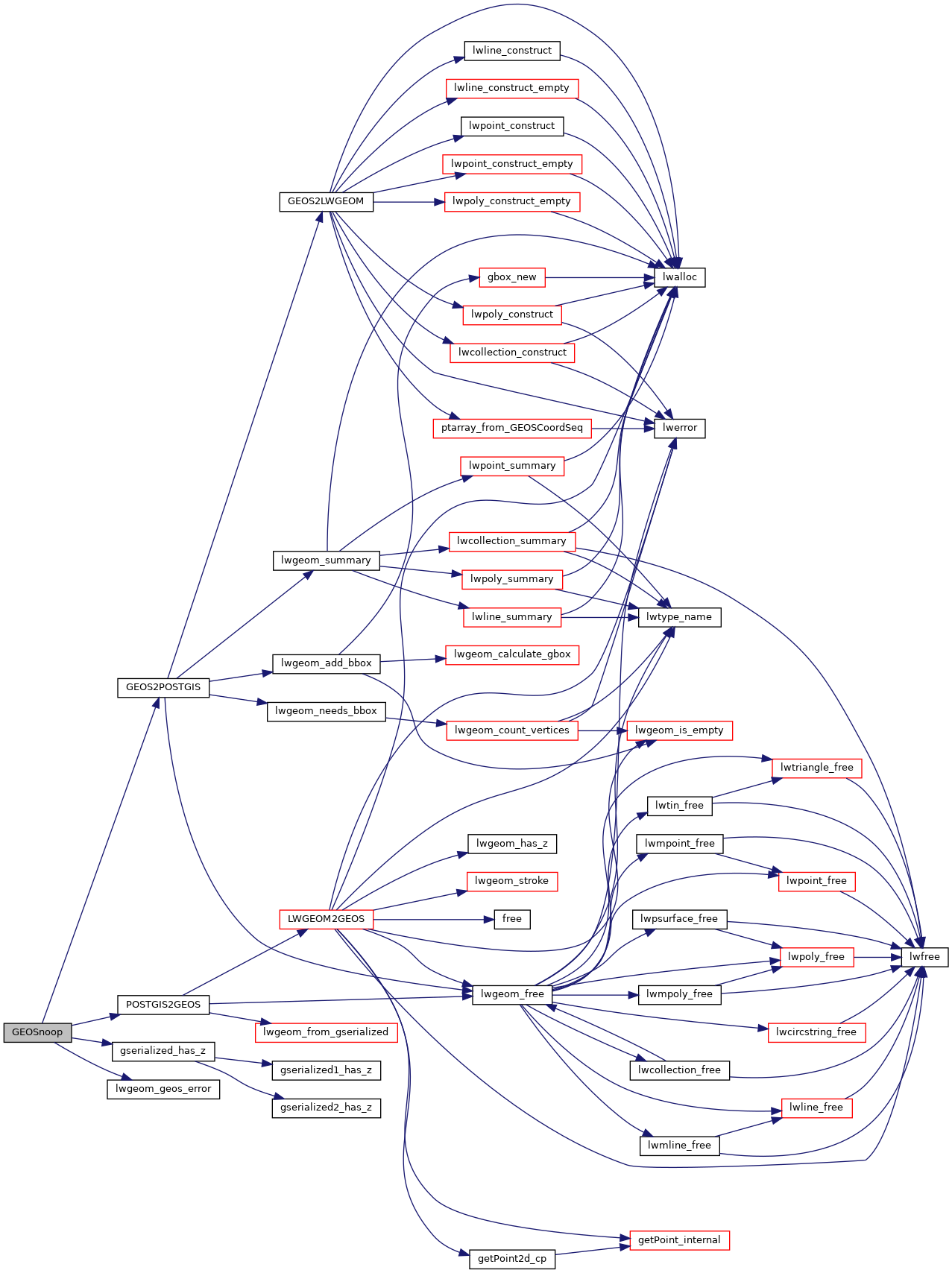◆ GEOSnoop()
| Datum GEOSnoop | ( | PG_FUNCTION_ARGS | ) |
Definition at line 2904 of file postgis/lwgeom_geos.c.
int gserialized_has_z(const GSERIALIZED *g)
Check if a GSERIALIZED has a Z ordinate.
Definition: gserialized.c:174
GSERIALIZED * GEOS2POSTGIS(GEOSGeom geom, char want3d)
Definition: postgis/lwgeom_geos.c:2750
GEOSGeometry * POSTGIS2GEOS(const GSERIALIZED *pglwgeom)
Definition: postgis/lwgeom_geos.c:2775
Definition: liblwgeom.h:457
References GEOS2POSTGIS(), gserialized_has_z(), lwgeom_geos_error(), and POSTGIS2GEOS().
Here is the call graph for this function:
